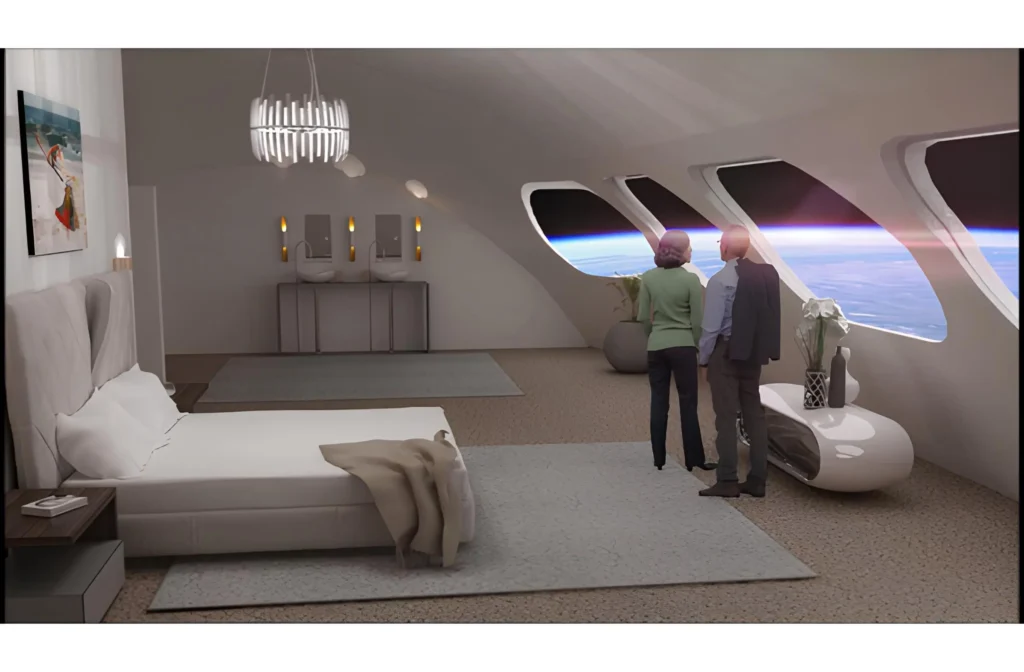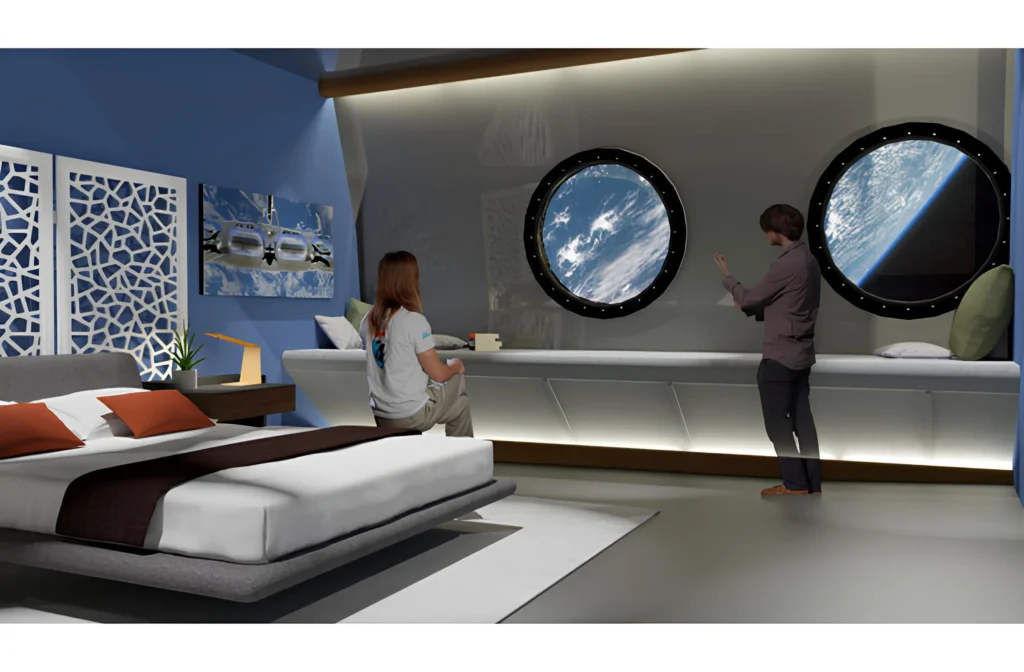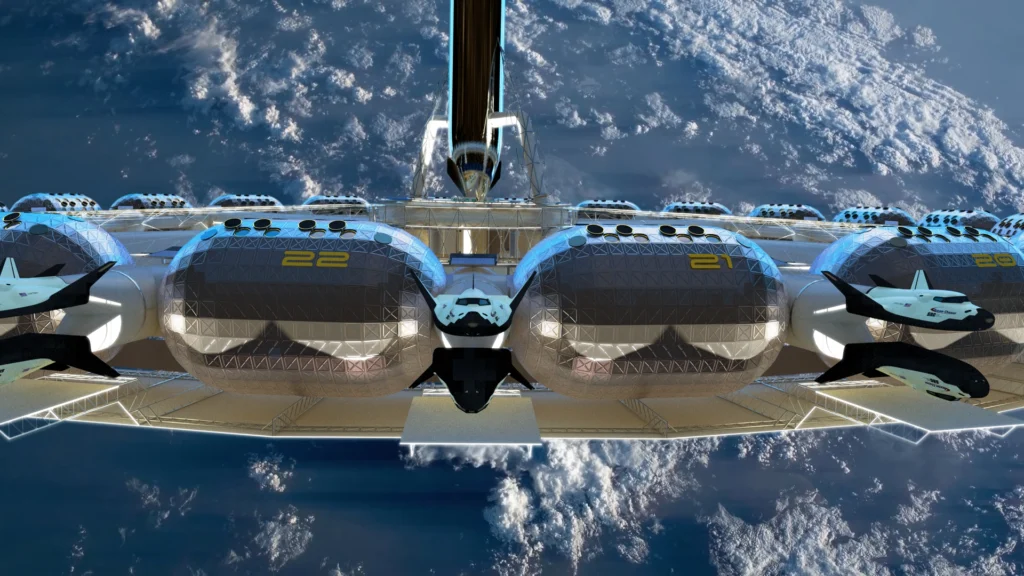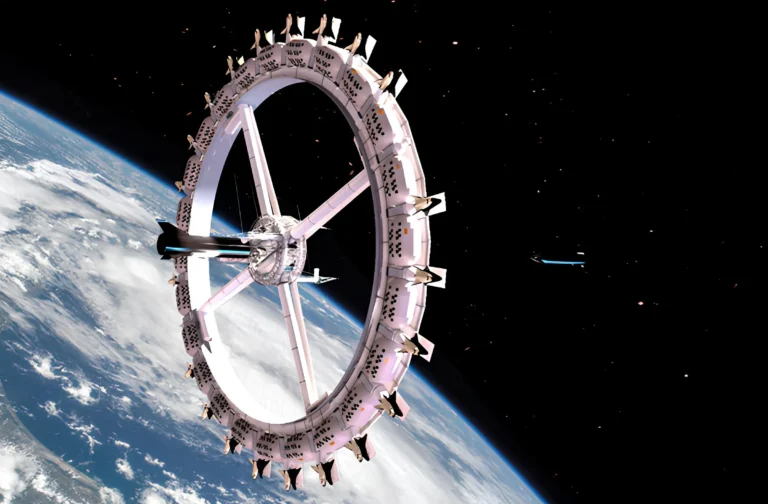SACRAMENTO- The first space hotel, Voyager Station, is set to open in 2027 by Orbital Assembly Corporation (OAC). This luxury resort will orbit Earth and offer artificial gravity, designed to host 280 guests and 112 crew members.
The project aims to make space travel a common experience for private individuals, much like international travel today.
Voyager Station draws on decades of aerospace theory and design, including the rotating wheel concept first proposed by Wernher von Braun.
The station will launch from Kennedy Space Center (KSC) and provide unique experiences such as low-gravity sports and panoramic views of Earth.

World’s First Space Hotel
Commercial space tourism has entered an active phase, marked by the recent ventures of Jeff Bezos (Blue Origin) and Richard Branson (Virgin Galactic).
However, Voyager Station intends to take this a step further by enabling extended luxury stays in orbit.
Developed by OAC, the rotating space station will generate artificial gravity through centrifugal force, offering a more Earth-like experience than any previous space venture.
The hotel’s design is inspired by the 20th-century vision of Wernher von Braun, who conceptualized a rotating wheel station to simulate gravity.
Voyager Station will rotate approximately 1.5 times per minute, initially simulating lunar gravity and potentially scaling to Mars or Earth levels.
The gravity feature is critical for guest comfort and functionality, with elevator shafts leading from a central zero gravity hub to the outer habitation modules where artificial gravity takes effect.

Features and Layout
Voyager Station will offer 24 modules arranged in a circular wheel, spanning approximately 125,000 square feet.
Each module will serve a specific function, ranging from accommodation and recreation to hospitality and research. Expected facilities include:
| Facility | Description |
|---|---|
| Restaurant & Bar | Full-service dining with space-friendly cuisine and beverages |
| Concert Hall | Designed for zero-gravity musical performances |
| Gym | Built to leverage low-gravity for unique fitness experiences |
| Cinema | Featuring traditional films and immersive space-themed content |
| Observation Decks | Panoramic views of Earth from orbit |
Guests will arrive via a central docking hub, then proceed to their modules via pressurized transfer shafts.

Pricing, Accessibility, and Market Strategy
Currently, space travel remains accessible primarily to ultra-wealthy individuals. For example, Oliver Daemen paid $28 million for a brief suborbital flight with Blue Origin.
However, OAC’s long-term goal is to make space vacations competitive with traditional high-end cruise packages.
Tim Alatorre, OAC’s vice president and chief architect, emphasizes that the hotel itself is relatively cost-efficient; it’s the space travel that remains the financial barrier.
With advancements from companies like SpaceX, launch costs are projected to drop, potentially making orbital stays viable for a broader market within a decade.
OAC has also begun offering real estate opportunities aboard Voyager Station. The company promotes leasing options for villas, commercial units, and even industrial space, mirroring high-end terrestrial developments.

Industry Outlook
While OAC leads with the world’s first space hotel concept, competition is rising. Axiom Space has partnered with NASA to develop a commercial module on the International Space Station (ISS), eventually forming an independent facility.
Similarly, Sierra Space and Blue Origin are collaborating on Orbital Reef, a multi-use commercial space station.
However, Voyager Station stands out as the only project built specifically for tourism, with leisure, hospitality, and entertainment at its core.
Prototypes like the Gravity Ring and Pioneer stations are scheduled to become operational by 2025, allowing OAC to test systems and refine technologies before launching the full-scale hotel.
Despite its ambition, the project faces uncertainties tied to funding, logistics, and international regulation.
Still, Alatorre remains confident: “There’s nothing technologically standing in our way. It’s just a question of time and money, and we can overcome those.”
Stay tuned with us. Further, follow us on social media for the latest updates.
Join us on Telegram Group for the Latest Aviation Updates. Subsequently, follow us on Google News

